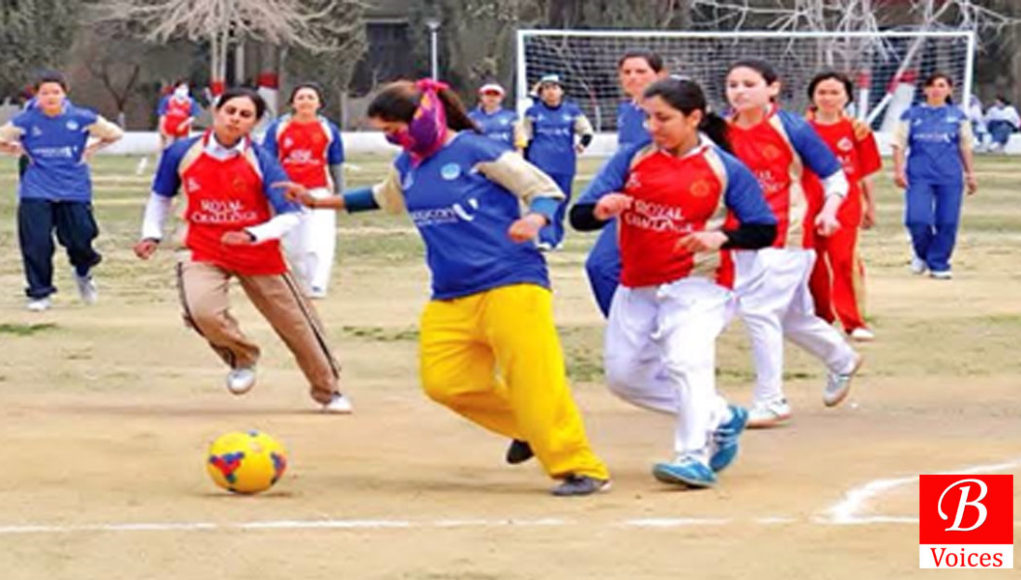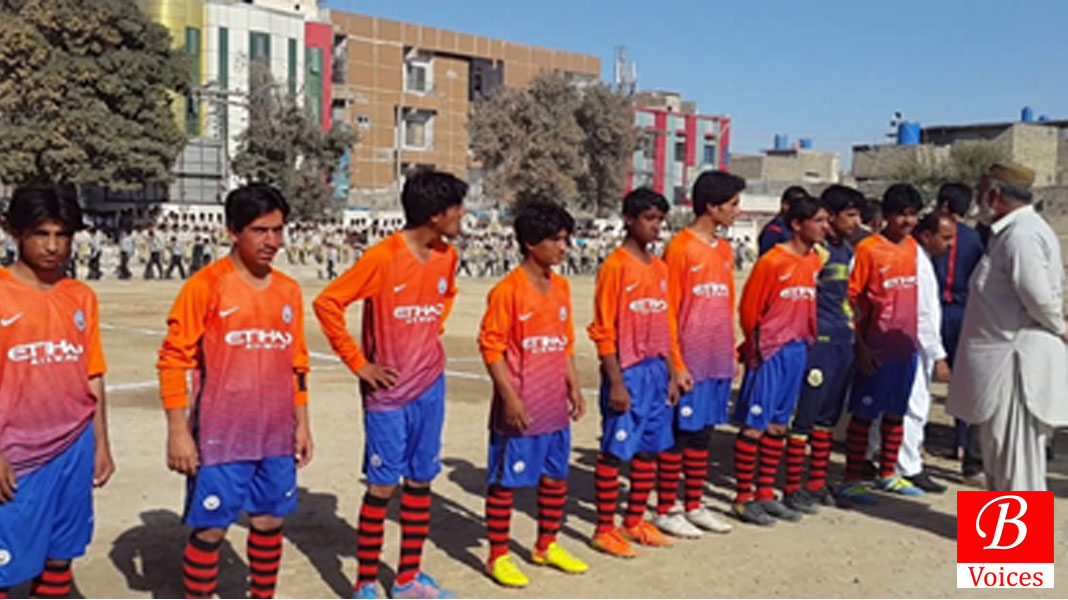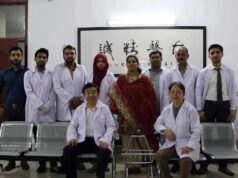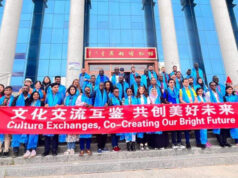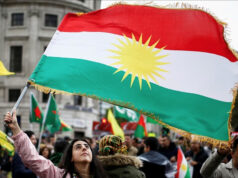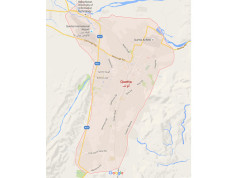Sakhawat Hussain
In the late 70s, there was a small shop named “Sialkot Sports” on the main Prince Road in Quetta. The shop was run by an old man whom everyone affectionately called “Chacha”. We used to buy our hockey sticks and other sport gears from him either on a cash basis or on credit. Often, it was the latter case. The shop was frequented by players of many clubs, including ours. Teams from schools and colleges were regular customers, as well, and once in a fortnight, many of us would drop by to do some window shopping and catch up with the latest sports gossip. This was also a good opportunity for Chacha to inform us about the arrival of new stocks. Chacha’s Sialkot Sports was not only a store selling sports goods, but also a much-loved venue where players would meet, chat, and exchange notes. Similarly, we used to visit our workout clubs, or body-building gyms, that were mostly established by friends and colleagues in small, rental structures. Among other things, it was fun to see the beginners there whom we used to call “Single Pusli” (literally it meant a man with a single rib, but figuratively it was a teasing term that poked fun at the minuscule muscles of the beginners) – the aspirants walking around as if they were the local versions of a John Rambo or of an Arnold Schwarzenegger (famous muscle men-turned-movie-stars that were all the rage around that time). But that was how the youths of then perceived themselves. It was the culture of the time, of which sports were a major component and through which the youths expressed themselves and many even aspired to make them as their chosen profession.
Young people in those days were not shy about making a humble start. Our seniors and elders were never tired of preaching the same; they always insisted that we take the first steps and not to give up. Their preaching and efforts often bore fruit. For example, an enthusiast under the tutelage of such guides, Shoukat Ali Changezi, started his bodybuilding career from one small bodybuilding club housed in a dilapidated building in Quetta City. It was his sheer passion for the sport combined with the guidance and encouragement of non-credentialed, uncertified but sincere, and dedicated elders that eventually took him to Norway where he could exploit his true potential. Soon upon his arrival there, he rose to international stardom in the world of bodybuilding and won many titles, including that of Mr. Oslo once and of Mr. Norway twice. He is now a well-known and respected figure in the world of bodybuilding in Scandinavia. It was the prevailing culture of sports at the time that brought up and nurtured such fine athletes not only at national but international levels. Can one bring back that glorious culture? Nothing is impossible but one has to take a step forward in the right direction, no matter how small, as was also the mantra of our coaches and trainers at that time.
“Sports can create hope where once there was only despair”
According to the last census, more than fifty percent of the population of Pakistan comprises of school, college and university going young men and women. Despite all constraints and financial shortcomings, the provincial and federal governments can amply fund these educational institutions for the sole purpose of harnessing the youths’ enormous potential for sports. Through wise planning and efficient use of resources, these institutions can be turned into breeding grounds for quality athletes. As I have mentioned in my previous article “The Revival and Promotion of Sports in Balochistan” all such measures can directly and indirectly influence youth culture and that such changes in youth culture can, in turn, have direct impact on sports culture in general. Since young people are the most active agents of change in any society, it would be prudent to initiate a humble start towards inculcating a culture of sports in the youth through these educational institutions. I say humble because changing an entire culture, or even a sub-culture, is not easy, especially if the change is towards something that is physically demanding and requires effort, commitment and mental discipline. This start would first aim to raise awareness about sports among the youth and then to educate and rigorously train the future generations of the province. This will basically mean a consistent two-pronged approach of a.) education in the classrooms and b.) training in the fields, an approach that may be instrumental in achieving such lofty aims. The fruits of all these efforts would be mainly in the form of world class athletes and a healthy society.
Now let’s bring some focus on the efforts needed at the educational institutions. These efforts may start with the introduction of sports as an integral part of the overall curriculum right from the primary level. This integration of the physically demanding activities with the intellectual component in a student’s life should be done in such a way that will not burden him or her but that the two will play complementary roles in their lives, both inside school and outside. After all, it is a universally accepted wisdom that a healthy mind requires a healthy body. It is also an accepted fact that physical exercise is one of the better ways to get rid of mental and psychological stress, afflictions from which many suffer in Pakistan. The key words here are “balance” and “complement” which point to a natural, holistic approach and not mechanical and rigid compartmentalization. Again, awareness and education are important starting points. The young may be taught the importance of sports and their numerous health benefits, both short term and long term.
“A journey of thousand miles starts with a single step”
Strategies for achieving such goals are necessarily diverse and they must be all-inclusive. For example, awareness raising may be done in the class rooms through informal talks by inviting popular sports figures and through mutual learning and discussions among the students themselves. Essay writing competitions, formation of sports literary societies and hobby clubs, holding competitive debates in class, school and inter school levels are some useful ways for inculcating and promoting interest in sports. Arranging seminars on sports with renowned personalities as guest speakers would provide a platform and opportunity to the aspiring students for an interaction with them. Arranging walks for the students along with their parents and members of civil society and renowned persons of the community is a common practice nowadays everywhere, all meant to underline the importance of a cause, or of a socio-ecological issue, for example. Encouraging students to cover such sports activities by writing about them or photographing them for their respective websites and blogs, is another example. Sports ambassadors from among the student bodies would be a good idea to instill and propagate the spirit of sport in the student community. It is true that many sports activities do take place at educational institutions but they are not enough: much more needs to be done if we want to see some real results. As I have pointed out earlier, here and in my other writings, the potential is very much there but which is either not utilized rationally and effectively or under-utilized, and at times even abused.
Once formulated and incorporated, the implementation of the physical aspect of the curriculum that aims to achieve the agenda of sports entails employing subject specialists and qualified coaches and trainers. Inter and intra-school, college and university level competitions may be planned, organized and executed on annual basis. Competitions between students, teachers and the parents would not only promote cordial relations but also develop and promote interest in sports among all the stakeholders. Summer/ winter coaching camps for individual sports can be assigned to a particular school according to its capacity. A talent hunt may be carried out during these competitions and camps for the formation of provincial teams. Annual country tours for such teams may be arranged for cross-training and recreation. Ultimately, these educational institutions would serve as feeder organizations of sportsmen and sportswomen for higher levels of club sports in the province. This is a common model in many countries, especially in countries that are considered powerhouses of world sports, such as Germany, Australia, and Japan, to name just a few. The students may be maximally involved in the process of formation, development, organization and administration of sports activities in their respective areas. After all, they are major stakeholders. Monetary incentives in the form of awards, stipends, fee exemptions, and cash prizes for the students and training of the trainers at home and abroad are essential components of any successful model.
In this short piece, I have tried to focus on just one aspect of (re)-creating a youth sports culture in Balochistan: educational institutions. By fixing our gaze on these fundamental institutions of the youth, and by fixing what is broken in them – namely the youth sports sub-culture—we can not only save and benefit the future of the youth of the province but also contribute immensely in nurturing a healthy society for all. In other words, the initiatives and efforts needed to achieve them as hinted at in this essay, if given serious and sincere consideration, would not only bring about positive and healthy changes in society but would also provide opportunities to the young men and women of the province with tremendous sporting potentials to shine on the world stage as proud ambassadors of the province and the country.
Note: This is part 2 in a series of articles on the revival and promotion of sports in Balochistan. Click here for the first part.
Disclaimer: Views expressed in this article are those of the author and Balochistan Voices not necessarily agrees with them.
Share your comments!


